Discover key trends shaping the aluminum industry in 2025.
January 10, 2025
Written by Turian Biel

Table of Contents
- Key Trends in the Global Aluminum Market for 2025
- Projected Growth of the Aluminum Market
- Aluminum Production Capacity and Demand
- Aluminum Prices and Market Dynamics
- Impact of Recycling on the Aluminum Industry
- Aluminum Alloys Market Growth
- Aluminum Production in the UK
- Global Aluminum Surplus Predictions
- Aluminum Market in the Middle East and Africa
- High Purity Alumina Market Trends
- Future Outlook for Aluminum Production
- Emerging Trends and Innovations in Aluminum Production
- Technological Advancements in Aluminum Manufacturing
- Aluminum in the Automotive Industry
- Aluminum's Role in Renewable Energy Solutions
- Regional Market Dynamics in North America
- Aluminum Supply Chain Challenges
- Investment Trends in the Aluminum Sector
- Aluminum's Environmental Impact and Sustainability Efforts
- Global Aluminum Trade Dynamics
- Future of Aluminum Alloys in Various Industries
- Aluminum Market Forecasts and Economic Indicators
- Market Challenges and Opportunities in Aluminum Production
- Conclusion
Key Trends in the Global Aluminum Market for 2025
Projected Growth of the Aluminum Market
The global aluminum market is projected to grow significantly, reaching a value of $403.29 billion by 2032, with a compound annual growth rate (CAGR) of 6.2% during the forecast period. This growth is driven by increasing demand across various sectors, including automotive and construction, as industries shift towards more sustainable materials.

Aluminum Production Capacity and Demand
According to the International Aluminium Institute, a 40% increase in global demand for aluminum by 2030 is anticipated, necessitating an additional 33 million tonnes of production capacity. This demand surge is expected to be fueled by the automotive sector's transition to lightweight materials, which enhance fuel efficiency and reduce emissions.
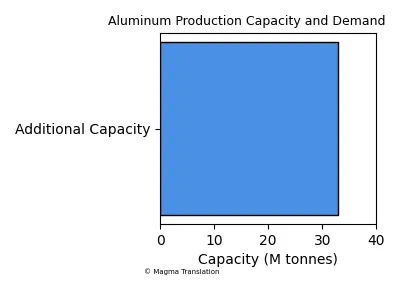
Aluminum Prices and Market Dynamics
Aluminum prices are expected to rise due to strong demand from emerging markets, particularly in Asia, which are experiencing rapid industrial growth. The increasing focus on electrification and renewable energy will further boost the need for aluminum, as it is essential in batteries, solar panels, and wind turbines. These factors indicate a possible increase in aluminum prices in 2025 Cost Masters.

Impact of Recycling on the Aluminum Industry
The aluminum industry currently recycles aluminum at a rate of around 76%. This high recycling rate is crucial for meeting emissions targets, as the industry must reduce emissions by more than 95% by 2050. The emphasis on recycling is expected to continue into 2025, as manufacturers prioritize circular economy principles and aim to minimize their environmental footprint.
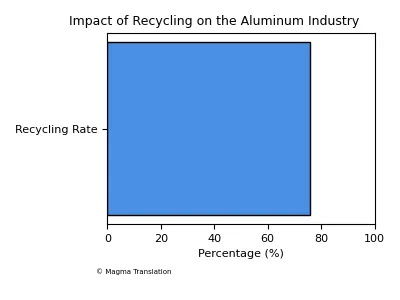
Aluminum Alloys Market Growth
The global aluminum alloys market size is expected to be worth around USD 142.09 billion in 2024 and is projected to reach approximately USD 259.54 billion by 2034, growing at a CAGR of 6.21% from 2024 to 2034. This growth is driven by the increasing use of aluminum alloys in various applications, including aerospace and automotive industries.
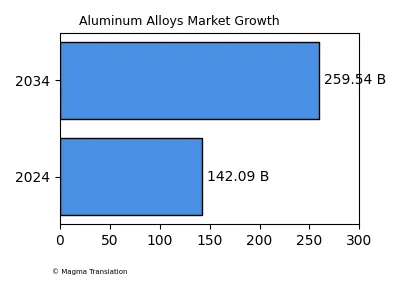
Aluminum Production in the UK
The Aluminium Production industry in the UK is projected to generate a revenue of £1.4 billion in 2024. Despite experiencing a decline at a compound annual growth rate (CAGR) of 5.1% over the past five years, the industry is expected to recover as demand for aluminum increases.

Global Aluminum Surplus Predictions
Rusal expects a global aluminum surplus of around 500,000 metric tons in 2024 and between 200,000-300,000 tons in 2025. This surplus may impact pricing and production strategies as manufacturers adjust to changing market conditions.

Aluminum Market in the Middle East and Africa
The Middle East and Africa Aluminium Market is projected to grow at a CAGR of 4.4% from 2023 to 2029. This growth is attributed to advancements in the transport industry and ongoing R&D activities, which are expected to drive demand for aluminum products in the region.

High Purity Alumina Market Trends
The high purity alumina market size is evaluated at USD 4.29 billion in 2025, with an anticipated growth to exceed USD 20.56 billion by 2037. This reflects a CAGR of over 13.6% during the forecast period, driven by increasing demand in electronics and LED applications.

Future Outlook for Aluminum Production
The global aluminum production is expected to face challenges due to supply chain disruptions and fluctuating raw material prices. However, the overall outlook remains positive, with significant investments in technology and sustainability initiatives expected to drive growth in the aluminum sector through 2025 and beyond.
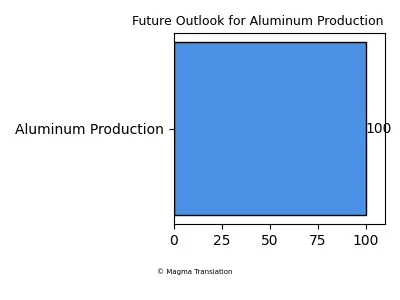
Emerging Trends and Innovations in Aluminum Production
Technological Advancements in Aluminum Manufacturing
Innovations in aluminum manufacturing technologies are expected to enhance production efficiency and reduce costs. Companies are increasingly adopting automation and digitalization to streamline operations. For instance, Hydro aims to produce its first pilot volumes of zero-emission aluminum using the HalZero technology by 2025. This shift towards sustainable practices is crucial for meeting future demand.
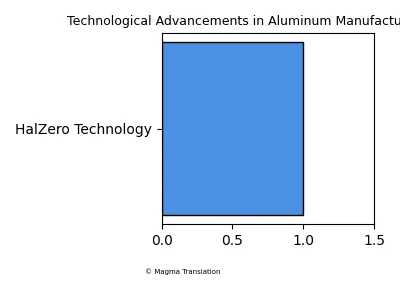
Aluminum in the Automotive Industry
The automotive sector is a significant driver of aluminum demand, with manufacturers increasingly using aluminum to reduce vehicle weight and improve fuel efficiency. According to the International Trade Administration, China’s domestic automotive production is projected to reach 35 million vehicles by 2025, significantly impacting aluminum consumption in automotive manufacturing.
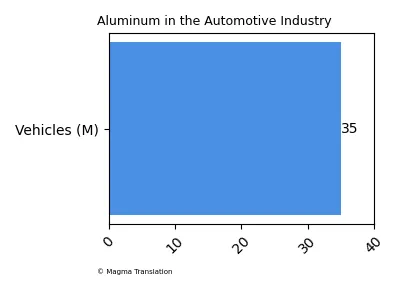
Aluminum's Role in Renewable Energy Solutions
Aluminum is increasingly recognized for its role in renewable energy applications, particularly in solar panels and wind turbines. The demand for aluminum in these sectors is expected to grow as countries invest in green technologies. The global aluminum market is projected to experience significant growth, with a focus on sustainability and efficiency driving demand IndustryARC.
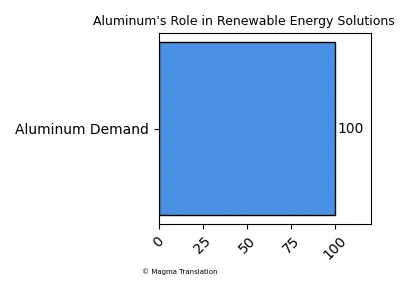
Regional Market Dynamics in North America
Preliminary estimates from the Aluminum Association indicate that demand for aluminum in North America increased by 5.2% year-over-year through the first half of 2024. This growth follows a decline in 2023, where imports dropped by around 25%, highlighting the region's recovery and increasing domestic production.

Aluminum Supply Chain Challenges
The aluminum industry faces several supply chain challenges, including disruptions in raw material availability and fluctuating prices. According to SMM, the global alumina market has faced significant supply disruptions since the start of 2024, leading to a price increase of 24.1% as of October 14, 2024. These challenges may impact aluminum production and pricing strategies.
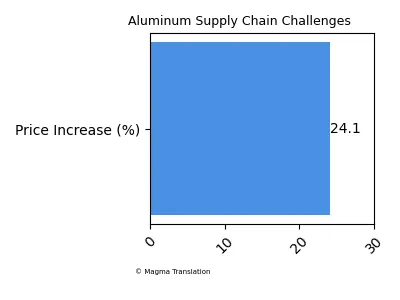
Investment Trends in the Aluminum Sector
Investment in the aluminum sector is expected to rise as companies seek to enhance production capabilities and sustainability initiatives. The global aluminum market is projected to reach a value of US$ 249.29 million by 2025, growing at a CAGR of 6.4% during the forecast period. This growth is likely to attract more investments in technology and infrastructure.
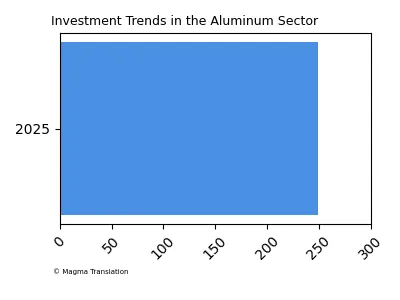
Aluminum's Environmental Impact and Sustainability Efforts
The aluminum industry is under pressure to reduce its environmental impact, with a focus on sustainability and recycling. The International Energy Agency expects the share of secondary aluminum production to reach 42 percent by 2030. This shift is crucial for meeting emissions targets and promoting a circular economy.
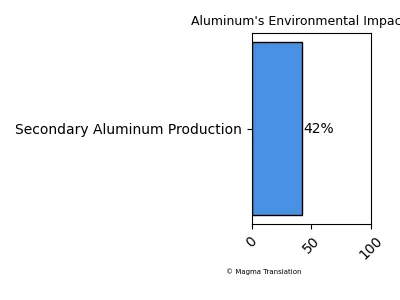
Global Aluminum Trade Dynamics
The dynamics of global aluminum trade are shifting, with emerging markets playing a more significant role. The global aluminum market is projected to grow from USD 202.04 billion in 2023 to USD 302.04 billion by 2030, indicating a robust demand for aluminum products across various regions.
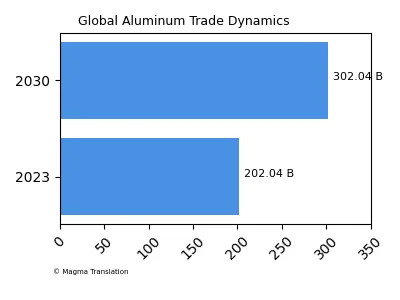
Future of Aluminum Alloys in Various Industries
The demand for aluminum alloys is expected to rise significantly, with the global aluminum alloys market projected to reach approximately USD 259.54 billion by 2034. This growth is driven by the increasing use of aluminum alloys in aerospace, automotive, and construction industries, where lightweight and durable materials are essential.

Aluminum Market Forecasts and Economic Indicators
Economic indicators suggest a positive outlook for the aluminum market, with forecasts indicating a steady increase in demand and production. The global aluminum market is expected to grow at a CAGR of greater than 3.5% during the forecast period (2024-2029), reflecting the industry's resilience and adaptability in a changing economic landscape.
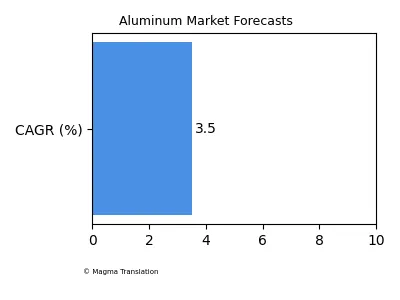
Market Challenges and Opportunities in Aluminum Production
Regulatory Changes Impacting the Aluminum Industry
Regulatory changes are expected to significantly impact the aluminum industry, particularly concerning environmental standards and emissions reductions. The International Aluminium Institute has highlighted the need for the industry to adapt to stricter regulations, which may require substantial investments in cleaner technologies. The industry currently recycles aluminum at a rate of around 76%, and to meet emissions targets, it must reduce emissions by more than 95% by 2050.
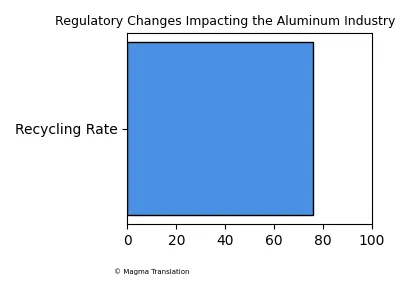
Aluminum's Role in the Construction Sector
The construction sector is increasingly utilizing aluminum due to its lightweight, durability, and resistance to corrosion. This trend is expected to continue, with aluminum being a preferred material for building facades, roofing, and structural components. The global aluminum market is projected to grow from $249.83 billion in 2024 to $403.29 billion by 2032, driven in part by increased demand from the construction industry.
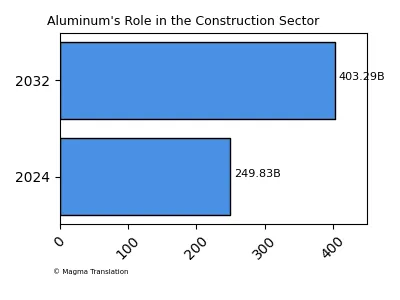
Future Innovations in Aluminum Recycling Technologies
Innovations in recycling technologies are set to enhance the efficiency and effectiveness of aluminum recycling processes. Companies are investing in advanced technologies to improve the quality of recycled aluminum and reduce energy consumption during production. The International Energy Agency expects the share of secondary aluminum production to reach 42 percent by 2030, highlighting the importance of recycling in meeting future aluminum demand.
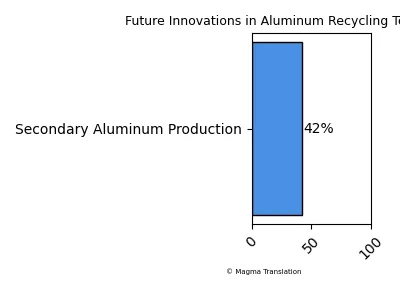
Conclusion
The aluminum market is poised for significant growth in 2025, driven by increasing demand across various sectors, technological advancements, and a strong emphasis on sustainability. As the industry adapts to regulatory changes and embraces innovations in recycling, it is well-positioned to meet future challenges and capitalize on emerging opportunities. Stakeholders must remain vigilant and responsive to market dynamics to ensure continued success in this evolving landscape.
